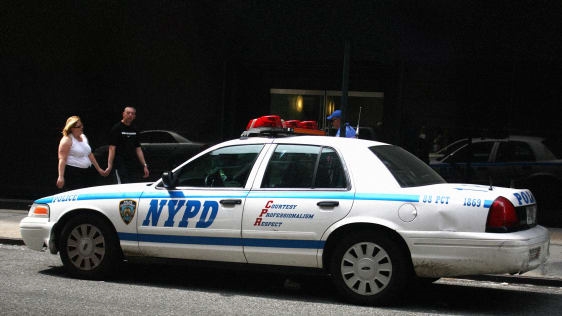Will Seeing Both Sides Of The Issue Help End Police Brutality?
For people on either side of it, police brutality is an issue that only has one side. Supporters of law enforcement maintain police have a job to do, and tragedies are sometimes collateral. On the side of the victims, most visible in movements like Black Lives Matter, the actions of police amount to a fundamental disregard of their victims’ humanity.
A new four-part documentary, premiering on TV One on January 22, aims to strike a middle ground, and bring the two sides into conversation with each other. Fittingly called Two Sides, the series follows four tragic instances of death as a result of the actions of law enforcement–the killings of Eric Garner, Ezell Ford, John Crawford, and Sandra Bland. Julius Tennon and Lemuel Plummer of JuVee Productions and L. Plummer Media, respectively, produced the series; both of their companies have a special focus on telling stories from the black community. Viola Davis, whom Tennon is married to, also produced and narrated the series. Commentary from activists like Al Sharpton and politicians like Maxine Waters intermingles with the perspectives of various law enforcement officials and attorneys.
Each episode takes an hour to dive into the events surrounding each case. In the Garner episode, the first in the series, we see body-cam footage of his interaction with the police on Bay Street in Staten Island; we see an officer put Garner in the chokehold that eventually deprives him of breath. His mother, sister, and partner recount where they were that day and how they learned of Garner’s death; law enforcement officers describe the context of Mayor Bill de Blasio’s crackdown on illegal cigarette sales, which they believed Garner to be doing in front of a local beauty shop.
For its balanced approach to the different perspectives–the law enforcement and Black Lives Matter representatives are given equal on-screen time–Two Sides is provocative, and deliberately so, Plummer tells Fast Company. “Most of the time, when you hear these stories or see these cases on TV, it’s coming from a biased approach,” he says. “We wanted to give everyone an opportunity to share their sides.”
The reason for this approach, Plummer says, is that in the years since 2014, when Garner, Ford, and Crawford lost their lives, there’s been very little change in the conversation and very little progress in the realm of police-community interactions. In 2017, 987 people were killed by the police–24 more than the previous year. “We know there are bad cops out there,” Tennon says. “But by showing all perspectives on the issue, we wanted to have a conversation around: What can we do to change these things?” Understanding law enforcement’s processes, the points at which decisions are made and in response to what governmental or intra-agency pressures, will give community members another lens through which to view the reforms they’re pushing for.
Which is not to say the response to Two Sides has been unilaterally positive. At a premiere event the week before the release, “there was a lot of emotion,” Tennon says. “There have been very few officer convictions in these cases, and we know that that rubs our community the wrong way.” But confronting that emotion and frustration, he hopes, can galvanize viewers to look at the issue with fresh eyes, and renew calls for police reform, more community-led safety initiatives and especially, voting for elected officials, a topic around which Tennon says there was a lively conversation at the premiere event. “What we hope people take away is that we have to keep working in our own communities to push for the reforms and vote for the elected officials we want to represent us. Change comes slow, but we eventually want to see that change.”
Fast Company , Read Full Story
(20)



